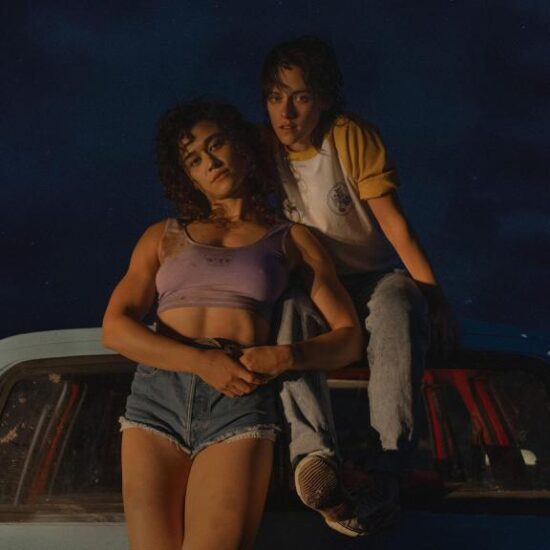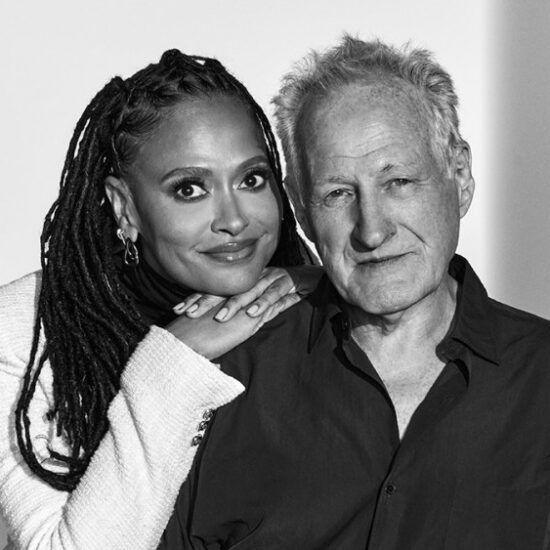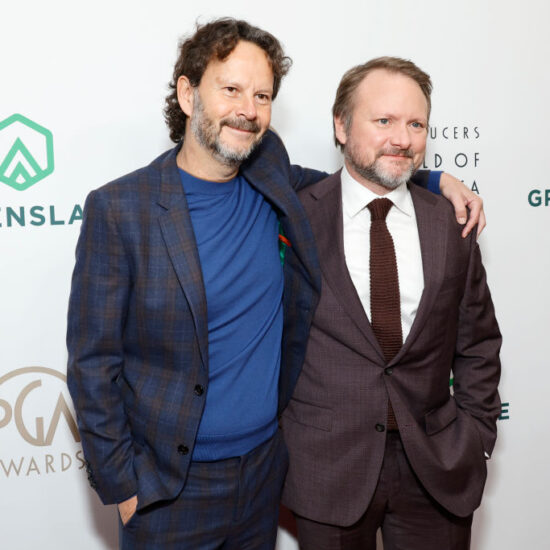
Is this show amazing or underwhelming or something in between? We’re talking through our feelings — join us.
“House of the Dragon” is a hit, but what’s working and what’s not remains hotly contested among fans and critics alike. How is the show handling misogyny, violence, and wigs? Are the week-to-week plot twists as gripping as “Thrones’” before it? The show is pulling in a massive audience, but are we just going through the motions and watching the big buzzy show, or do we actually love it?
As Season 1 enters its second half, let’s look at the pros and cons of Episodes 1-6 to better assess how HBO’s latest juggernaut can get even better (and bigger?) from here. Episode 6 “The Princess and the Queen” jumps ahead more than any other so far, catching up with Alicent and Rhaenyra around 10 years after Episode 5, with the characters now played by Olivia Cooke and Emma D’Arcy. A lot has happened since Rhaenyra’s wedding, yet somehow not much at all. Everything until this point has been preamble, and the true purpose of “House of the Dragon” now seems to lie ahead.
Below, IndieWire’s Ben Travers and Proma Khosla duel — um, debate — the major moments from Season 1 so far. Working? The lead characters. Questionable? Dragon representation. Too gross to be objective? Crabfeeder, by a long shot.
The Opening Credits
Pro: It’s what you want to hear.
BT: As disappointing as the show’s lack of courage in this regard feels, it’s also totally in line with the rest of “House of the Dragon.” As I outlined in my initial review, HBO built this to be the next “Game of Thrones,” meaning it’s literally built to mimic the original series. Making sure fans feel the same way they do about the first franchise extension is essential to extending the franchise even further, and one of the surefire ways to do just that is through music. Fans want to feel how they felt when they heard Djawadi’s banger, week after week, for eight years — so why not simply give it to them? Is it boring, crass, and annoying? Absolutely. Is it still a great tune? Also, yes.
Con: It’s lazy as heck.
PK: I could not believe my ears when I started this show and heard the ol’ “dum dum, DUMDUMDUM dum” strings introducing it. I had a very mixed emotional response due to a decade of conditioning, but the predominant thought was: WTF. Do not tell me my boy Ramin Djawadi couldn’t drop the song of the season with new title music for this show. Don’t tell me he couldn’t revise or retool the original and come up with a fire-and-blood themed BANGER that reminds viewers of “Thrones” but has its own flare. Using this music is an insult to Djawadi, not to mention to 29 million viewers and counting!
Daemon Targaryen
Matt Smith in “House of the Dragon”
HBO
Pro: He’s deeply compelling.
BT: It’s funny: In a lot of ways, Daemon Targaryen represents everything that made the original “Game of Thrones” so difficult for me to stomach. He’s such a ginormous piece of shit, you know he’s taking the City Watch to Truffoni’s every New Year’s Eve and slopping those steaks. But not only is Daemon sadistic and misogynistic, he’s written to be seductively so — adding a cool factor to every objectively repulsive decision he makes. That kind of thing can get old, and the many cruel twists peppered throughout the original series wore me down.
But I must say: “House of the Dragon” needs him. There could certainly be less incest — a phrase I never thought I’d actually have to write down — but too many of the current characters maneuver for power like chess pieces: stiffly, predictably, and without much thought. Daemon flips the board over and then, well, does something unspeaking on top of it. His particular brand of chaos has been largely lacking in other aspects of the prequel series, so I have to come down in favor of Daemon. I hope he meets his maker eventually, but until then, at least he’s keeping the audience on their toes.
Con: He sucks.
PK: I am deeply concerned for the Daemon Targaryen hive, especially the “Daenyra” subhive (a word I learned this week and would like to chuck into the sea for the crabs to feed on). Are we really still falling for this rogue-man-who-plays-by-his-own-rules bullshit? Did y’all clock how quickly he went from “chaotic king” to literal wife killer? And no offense to Matt Smith, but he doesn’t do it for me and never has. Yes he is objectively tall and chiseled and handsome and charismatic and acted the shit out of that one scene without saying a word — wait, what side am I on again?
Alicent and Rhaenyra
Pro: Female besties.
PK: Imagine my absolute unexpected delight as a woman who watched all of “Game of Thrones” to watch this pilot and have it be undeniably about YOUNG WOMEN. Yeah Daemon is there or whatever, but it is not his show. There is a reason it focuses so much on Alicent and Rhaenyra (who aren’t even friends in the book!): It makes things personal. Emily Carey herself told IndieWire how important it is to build that relationship up before breaking it down, and you really feel that with these performances. Female friendships are deep and complex and that’s something “Thrones” rarely, if ever, explored.
Con: …but they turn against each other.
BT: In a show with three male creators, based on one of those creators’ books, the male gaze is going to make its way into the story. For the most part, I like Alicent and Rhaenyra’s shared arc, especially as it builds anticipation / terror over the prospect of Rhaenyra murdering her best friend’s son in order to preserve her right to the throne. I’m pretty sure we haven’t seen a friendship tested like that on TV, and even if it never comes to pass, the underlying suspicion is enough to send unique ripples through both characters. That being said, Alicent and Rhaenyra are the two lead women in “House of the Dragon,” and, of course, they end up fighting each other. As a plot requisite, it’s easier to forgive falling back on a vexing cliche, but it’s still a vexing cliche.
Dragons

What’s going on in that pretty little head?
HBO
Pro: They look *sick*.
PK: Ahead of watching the episodes, someone I know (one of our colleagues? Ben Travers himself?) joked that the whole show was about building a house and then a dragon coming and moving in. I have not stopped thinking about how much I want that show. All these dragons have different looks and skills and names and personalities, and they get the short end of the stick in a show notorious for large ensembles where viewers can barely keep track of the incestuous lead characters.
Con: They have no identities.
BT: Gosh, I wish I’d made that joke, because now I want that show, too! Frankly, it just sounds… nice, and I know that’s not what “House of the Dragon” is about, but maybe the next spinoff can be?
As far as the show we’ve got, I agree that it’s frustrating to see all the dragons basically treated as the same general creature, rather than individuals with their own personalities. That’s a problem, and I hope it’s addressed in the second half of the season. What I do like about the dragons, though, is how they’ve been presented. Rhaenyra’s dragon, Syrax, emerging through the fog in Episode 2 looks great. Same for the inevitable yet awesome reveal in Episode 3, when Seasmoke flies into frame and turns the Crabfeeder’s army to toast. Even in Episode 6, just seeing the dragon drag its tail along the ocean as it flies low overhead, that’s a great shot! All these shots give the flying cats (yes, they’re definitely inspired by cats) a style that should be mirrored by substance. Hopefully the latter’s still coming.
The Crabfeeder
Pro: As close as this show will come to comedy.
BT: The name “Crabfeeder” — especially as the big bad of the early episodes — is inherently funny, and I appreciated “House of the Dragon” leaning into an absolutely absurd idea as hard as they did, just for the laughs. Of course, that presumes you can separate from the onscreen barbarity enough to laugh, which… may not be possible for everyone. That is all. That is my only defense. I am done now.
Con: Ew ew ew ew ew ew ew.
PK: WHERE TO BEGIN. The graphic burning and oozing and feasting upon human flesh by crustacea? The trypophobia inspired by close ups of Mr. Feeder’s face? I sometimes wonder if it would all have been more palatable if they simply washed the Crab Feeder’s hair, but alas, we will never know. Everything to do with the Crab Feeder was suitably gross for someone named after this unique proclivity, right up until his first moments as a corpse that Daemon sliced in two and kept as a trophy. The intestines — when will I forget the intestines? I haven’t had pasta in weeks (but I have eaten crab).
Action (Or Lack Thereof)

Steve Toussaint in “House of the Dragon”
HBO
Pro: The one battle was pretty good!
BT: Credit where it’s due, The Battle of the Stepstones is well-executed. Daemon, feigning defeat, baits the Crabfeeder’s army out of hiding and proceeds to blitz through his opponents with a savvy tenacity. (As arrows cascade down upon him, Daemon kills his enemies while using their bodies as human shields — smart move!) Meanwhile, the Crabfeeder isn’t written like an idiot. As Daemon charges, he’s watching the sky, waiting for a dragon to swoop in and light up his soldiers. But Daemon just keeps coming, taking arrows along the way, until enough of the opposing army is exposed and he’s close enough to reach the Crabfeeder before he can escape. That’s when the dragon arrives, and that’s when the battle is won. It’s a risky plan that actually feels risky, instilling a reluctant admiration for Daemon’s abilities on the battlefield that helps elevate his dangerous status back in polite society. “Game of Thrones” has provided better, bigger battles, but the first for “House of the Dragon” still delivers.
Con: There are very few actual battles… so far.
PK: Not to be That Guy, but I have read “Fire & Blood” and there are so many amazing battles ahead. The show is moving slower than the book, but Season 1 feels like it’s treading water, inventing and stretching out things that are barely mentioned or don’t even exist in the text — which is sometimes fine, but sometimes pointless! The Crabfeeder storyline is there to build up Daemon, to show dragons in battle, and to gross us out with crabs. It’s fine, but once we get to the God’s Eye you’ll be laughing that this even happened.
So Much Childbirth, So Much Death
Con: JFC.
PK: I continue to be so curious about the writers’ ongoing fascination with childbirth. They can’t have known this was going to be a critical sociopolitical issue at the time of the show’s airing, but now it is and it’s tough to divorce all these scenes from cultural context. As someone with a uterus, I could actually do without weekly reminders of what can happen to my body if I lose control over it! Whenever a character observes that the birthing room is its own battlefield or that birth givers have it so hard or there is a deliberate juxtaposition between the violence of war and the excruciating pain of creating life — I don’t need it! I’m aware! The best thing these storylines can do is make other people aware and empathetic, so I hope that at least happens.
Pro: It’s “accurate.”
BT: Honestly, I don’t think there’s a “pro” beyond your last note, and I truly hope that by making the perils of childbirth an ongoing topic of conversation, “House of the Dragon” can widely exemplify why women’s bodily autonomy is an absolute imperative. From what I’ve been told, the scenes are… accurate, to a degree, so even in the context of a fantasy show reminiscent of the Middle Ages, perhaps some viewers will wake up, read a friggin’ book, and recognize health care as a human right.
The Brutal Death of That Other Joffrey

Theo Nate and Solly McLeod in “House of the Dragon”
HBO
Con: Too Many Tropes — and not good ones.
BT: I think it’s the combination of two overused and ugly tropes that grates on me more than either one taken on their own. Joffrey — Joffrey Lonmouth, not Joffrey Joffrey — is introduced solely so he can die, which then creates additional stories for Criston and Laenor. Technically, this falls under the unpopular theme of “fridging,” where a loved one is hurt or killed in order to move another character’s plot forward. It’s rather lazy writing, for one — since all we really know about Joffrey is that he liked to stir shit up, apparently — but because the only other thing we know about Joffrey is that he prefers the company of men, his death becomes doubly clichéd via the “bury your gays” trope — when LGBTQIA+ characters are routinely killed off instead of their straight peers. At its worst, such seemingly targeted deaths imply queer characters are dispensable, or even less human than their surviving heterosexual characters. Now, I don’t think Joffrey’s demise exemplifies the nastiest iteration of either of these trends — some supporting characters are expendable, and some have to be written to, well, support other characters — but it’s still worth noting that “House of the Dragon” ended up here.
Pro: Death is inevitable in this show.
PK: Joffrey dying is canon, even if it’s not as dramatic or brutal; in the book Criston strikes him during a tourney and he passes away after several days. Killing him at the wedding is a lot more narratively potent, inextricably linking Joffrey’s death to Laenor and Rhaenyra’s marriage, the disintegration of her relationship with Criston, and Alicent’s shift in loyalty. Laenor has ample cause to be resentful of everyone present, which is something the writers could use in future episodes or seasons. And when it comes to the “bury your gays” trope — Laenor himself is alive, arguably thriving! He’s married to the person next in line for the throne, he has three healthy children by Episode 6, and his wig even got better. I wish him nothing but peace and happiness, two things everyone gets in “Game of Thrones.”
The Royal Wedding
Pro: We love a good wedding.
PK: At least, I personally love a good wedding. The “She-Hulk” wedding bottle episode is my favorite so far, for no reason apart from its chosen setting. I go to a lot of Indian weddings, so I was delighted to see Houses Velaryon and Targaryen honor my people’s tradition of nonstop food and dance, that too before any vows are even uttered (not enough “Kala Chashma,” but you can’t have it all). The wedding drama also served — admittedly going too far at that one point — with Daemon sharing loaded looks with both Rhaenyra and Laena, some classic shit stirring by Larys Strong, and Queen Alicent entering in a show-stopping gown that will have people talking for years.
Con: We love a good wedding.
BT: Everything you said about the wedding is true and good, but once all the dancing had concluded and all the faces were turned to squished cobbler, my lingering feeling was: …that’s it? This was a wedding — a “Game of Thrones” wedding. Sure, the gown is a big deal, but it does less for the drama in this episode than it does to promise drama to come. And Criston’s fight is disgusting, but no matter how gross that final shot, the two-man brawl is relatively minor in comparison to expectations. The wedding continued a trend I expect to end soon, but has dragged on too long: “House of the Dragon” just hasn’t delivered anything stunning yet — and it needs to fix that, fast.
“House of the Dragon” airs Sundays at 9 p.m. ET on HBO.
Sign Up: Stay on top of the latest breaking film and TV news! Sign up for our Email Newsletters here.














